- Home
- Products
- Elementary
- Boride Powder
- 3D Printing Powder
- Sulfide Powder
- Oxide Powder
- Carbide powder
- Nitride Powder
- Silicide Powder
- Hydride Powder
- Telluride Powder
- Selenide Powder
- Stearic Acid Series
- Phosphide Powder
- Nanoparticles
- Metal Alloy
- MAX Phase
- Lithium Battery Anode
- Surfactant
- Molecular sieves
- Concrete Admixtures
- News
- Answers
- Contact
- About
News
- 1
- 1
Performance and application of AES fatty alcohol polyoxyethylene ether sodium sulfate
If you are looking for high-quality products, please feel free to contact us and send an inquiry, email: brad@ihpa.net
AES is the abbreviation of anionic fatty alcohol polyoxyethylene ether sodium sulfate surfactant. It is a modified product obtained by sulfating nonionic fatty alcohol polyoxyethylene ether (AE) with a sulfating agent and then neutralizing it with an alkaline neutralizing agent. AE and fatty alcohol sodium sulfate (AS) are the three main categories of fatty alcohol products. AES is one of the important varieties. Its molecular structure has oxyethylene groups and sulfated groups and has the properties of both nonionic and anionic surfactants. It has strong wetting, dispersing, emulsifying and detergency capabilities, very good hard water resistance and biodegradability, rich foaming power, little irritation to the skin, gentle use, and a transparent and stable solution. And it is easy to be adjusted by electrolytes (such as NaC1) to increase the viscosity.
Performance of AES
1. Surface activity
AES has strong wetting, emulsifying and detergency capabilities. Its surface tension is low and its critical Jiaodong concentration is small.
According to data, its surface tension and wetting force are affected by the number of moles of ethylene oxide combined and the length of the carbon chain. As the number of added moles of ethylene oxide increases, its surface tension and force also increase sharply. In addition, as the concentration of the liquid increases, its surface tension decreases. However when it reaches the critical Jiaodong, although its concentration increases, its surface tension will no longer decrease. As the number of added molecules of ethylene oxide increases, its wetting power will increase, and vice versa.
2. Resistance to hard water
AES has very good resistance to hard water and is compatible with hard water. It has high stability index for calcium and magnesium ions and has good calcium soap dispersing power.
According to data reports, The carbon chain C12-14 alcohol AES has a dispersion power of (seawater) calcium of 8% in 6300ppm seawater. In 330ppm hard water, its calcium dispersion power is 4%. Calcium ion stability index>10000ppmCaCO3. The stability index of AES calcium ions is very high because its molecules have good tolerance to calcium (magnesium) ions. That is, they can form organic calcium (magnesium) salts with calcium (magnesium) ions, and the calcium (magnesium) they generate ) salt can easily react with hydrophilic groups to form easily soluble calcium (magnesium) salt compounds. Therefore, AES has good water solubility and can be used for low-temperature washing. Tests have shown that the water solubility of C1-14 alcohol AES is superior to that of C14-1 alcohol or 16-18 alcohol AES. The solubility of AES in water increases as the number of moles of condensed ethylene oxide increases.
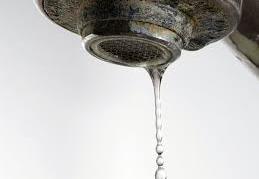
3. Decontamination power
AES has the hydrophilic group of polyoxyethylene ether and does not dissociate in water, so it has the characteristics of a nonionic surfactant and has good detergency in hard water. The detergency of AES in soft water is slightly lower than that of LAS. Still, in hard water its detergency is higher than other active agents, and its detergency is very stable.
The molar addition number of ethylene oxide and the carbon chain length in AES have a certain impact on the detergency. Generally, products with C4-18 carbon chain have higher detergency, while products with Cu-17 carbon chain are the best. The best addition number of ethylene oxide is in the range of EO=1-3. Because in detergent products, a higher chain number or EO addition number will result in poor water solubility, the addition number of C12-14 alcohol and ethylene oxide is EO= 3 is the most suitable.
4. Foaminess
AES can produce dense and rich foam and has many advantages when used in foam bath products. Foam stability is good in hard water or in the presence of soaps, fragrances, oils, etc. Its foam is more stable than lauryl sulfate in cold water. Commonly used are 2 or 3 mole ethylene oxide condensates of C12 or C1 alcohol, especially 3 mole ethylene oxide condensates that can produce richer foam. AES is used in conjunction with alkanolamide or amine oxide to make the product foam more stable.
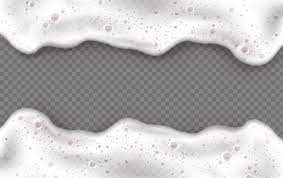
5. Antistatic property
AES has excellent antistatic properties. In the spinning process of woolen and synthetic fibers, excellent antistatic surfactants can be used to reduce the surface electrostatic voltage and specific resistance value of the fiber fabric, thereby improving the smoothness of the fiber, making the fiber body-like, soft to the touch, and improving the spinning quality. Yarn production efficiency. The antistatic properties of AES in woolen and synthetic fibers have been valued and developed.
6. Biodegradability
Experimental results show that AES biodegrades more than 99% without environmental pollution. The main reason why AES is biodegradable well is that after its compounds are discharged into wastewater systems or rivers, they have biodegradation and etherase cleavage effects, causing the ether bonds of their molecules to gradually crack and destroy, changing from long bonds to short chains. Still to the final conversion to produce carbon dioxide and moisture compounds.
7. Liquidity
AES has special fluidity and viscosity. During production, gelling areas often appear between 30% and 60% of the active content. It must be added to warm water at 25 to 40°C when diluting to avoid gelling. AES has extremely unusual fluidity. That is, under the conditions of lower concentration of active substances, the viscosity can be thickened simply by adjusting the electrolyte (such as NaC1). For example, it can thicken the viscosity of highly dilute solutions even with less than 6% active substance to over 5000mpas.
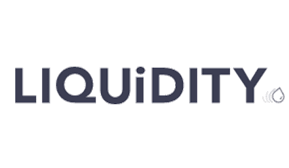
8. Compatibility
AES has the characteristics of both nonionic and anionic surfactants. It can not only be compatible with nonionic, anionic, amphoteric oxazoline and other surfactants. Still, it can also be compounded with quaternary ammonium cations and exert a synergistic effect to improve product removal. dirt and foaming properties. Combining AES with alkyl amides or amine oxides can form a weaker complex 2 and exert a better synergistic effect. The resulting product's detergency, solubility and fluidity can be improved; the foam can be rich and stable, mild to the skin, and less irritating. The electrolyte is compatible with AES, and the viscosity and fluidity can be adjusted under certain dosage conditions.
9. Safety to human body
Data report: The LDso of AES is 1700~5000mg/kg (acute oral administration to white mice), which fully meets the human body and environmental safety requirements and has no other carcinogenic effects.
Applications of AES
AES is mainly used in daily chemical detergents, such as industrial detergents, household detergents, bath detergents, shampoos, tableware detergents and cosmetic emulsifiers, as well as special chemical products for textiles, machinery, petroleum, construction, soap and other industries. It has many uses widely. Details are as follows:
1. Application in washing powder
AES is used to prepare washing powder, which is mainly compounded with surfactants such as LAS and AE. Although there are some or concentrated washing powders, the proportion of alcoholic surfactants such as AE or AES in the ratio has increased yearly. A considerable part of it has replaced the amount of LAS. However, because LAS has better washing and, decontamination and foaming power, is cheap, and is suitable for forming washing powder, AES or other active agents cannot completely replace it simultaneously. AES should be used in combination to make washing powder. General recipe.
In recent years, in addition to the above-mentioned combinations of LAS/AES/AE or LAS/AES/AS, there are also laundry detergents with LAS/AE or LAS/AOS/AES or LAS/AOS combinations. The advantage of using AES to replace LAS is that it not only uses less or no phosphate but also can be similar to nonionic AE, has a lower critical micelle concentration, reduces the total amount of active substances, and has good performance under cold water or low temperature conditions: detergency and very good solubility.
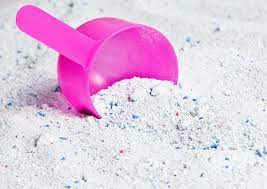
2. Application in liquid detergent
AES is easily soluble in water, can solve the problem of charged dyes, is resistant to hard water without ionization, is chemically stable, has good wetting power, emulsifying and dispersing capabilities; has good oil removal effect; does not irritate the skin. And is especially resistant to hard water. Performance is very suitable for making phosphorus-free, low-phosphorus, or washing various objects, daily necessities, decorations, floors, or fabrics in hard water or at low temperatures. Therefore, the application of making liquid detergents has become more common in the past decade. Its single active substance is formulated into a liquid detergent, which can be used to clean light dirt or general dirt and greasy items with good results. When washing heavy-duty items, it is often combined with nonionic active agents such as AE or other anionic active agents such as LAS, AS, or AOS.
In recent years, general cleaning agents, in order to reduce product costs and sales prices, still use LAS surfactants as the main ingredient and are used in products such as detergents or dishwashing detergents. Its basic formula mainly has three basic forms such as:
① LAS+AES+6501
② AES+AS+6501
③ AES+AEO-9+6501
Then add some necessary thickeners or other additives and mix with water.
3. Application in shampoo
In the past, most shampoos used fatty alcohol sulfate (AS) as the main component because it has a strong degreasing effect, is irritating to the skin and eyes, and has poor resistance to hard water. In recent years, many shampoos have replaced AS with AES or used in combination with it. However, transparent shampoos still use AES as the main ingredient with other additives such as stabilizers, hair conditioners, hair growth agents, nutrients, preservatives or thickeners, fragrances, pigments, etc. AES is used with shampoo. In addition to its excellent foaming properties (especially foam stability in hard water), it is not affected by changes in pH value. It has good solubility and excellent quality. It has non-irritating properties, is gentle, does not harm the scalp and hair, and is antistatic and easy to comb. When used with shampoo, in order to improve stability, additives such as coconut oil diethanolamine (i.e., lauric acid diethanolamine) or amine oxide are often added to the formula.
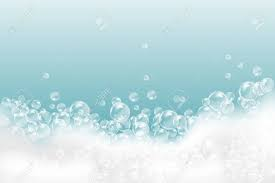
4. Application in bath detergents
Bath detergent is a bath cleaner. It has rich foaming properties, gentle decontamination, and cleanses the skin or hair, but is non-irritating and does not harm the skin and hair. Skin is left soft and smooth after washing. Because AES has the above-mentioned various active functions, especially in hard water, it has rich foam. Additives such as amine oxide or alkyl alcohol amide or other flexibility-increasing surfactants such as lgepon T (lgepon T), acyl group, etc., are added to the formula. Sarcoammonium salts, betaine surfactants, etc., will achieve excellent bathing effects.
5. Application in cosmetics
AES is mainly used as an emulsifier in cosmetics. It is based on AES, adds alkyl alcoholamide, lanolin, paraffin and preservatives and adds water to make an oil-in-water transparent cold cream. The paste is delicate and beautiful, easy to wash off with water, and does not stain clothes.
6. Application in machinery industry
Nonionic surfactants such as AES and AEO-9 or appropriate rust inhibitors and rust removers. It can be used to make cleaning machinery and equipment, lathes, and machine parts instead of gasoline. It has strong oil stain resistance, does not pollute the environment, is non-toxic to the human body, non-irritating to the skin, is not easy to catch fire, is safe to use, and can save energy and reduce costs. Features. To further improve the washing efficiency of a large number of machine parts, inorganic salts such as soda ash, sodium tripolyphosphate and water glass can be appropriately added.
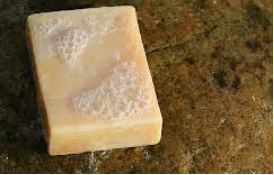
7. Application in soap industry
Soap is the oldest and safest surfactant. It has a good washing effect in soft water. However, the disadvantage is that it has a poor washing effect in hard water and low-temperature water, and it is easy to produce dirt circles around the basin. In order to solve this problem, various countries are seeking to use some surfactants with calcium soap dispersing power in combination with soap. Many surfactants can be used as calcium soap dispersants after research, but AES is currently a better type among them. Due to its rapid product development in the past ten years, its output and price are relatively suitable, and its calcium soap dispersing power is relatively good. It can easily meet the requirments of the soap industry for calcium soap dispersants.
8. Application in the textile industry
AES calcium soap has strong dispersion, hard water resistance and good antistatic properties. It can be used for cleaning wool spinning, synthetic fibers and other textiles. It has a good effect on removing grease in fibers and unsaponifiable matter inside wool grease. AES is widely used as a cleaning agent for woolen fibers. It is often used in conjunction with other nonionic surfactants such as AEO-9, alkyl alcohol amides and OP-10 (alkylphenol polyoxyethylene ether). AES can also be used as an antistatic agent, emulsifier and leveling agent in the wool spinning process17. It can also be used as a spinning oil for wool and synthetic fibers.
9. Application in the construction industry
AES has good foaming performance and good calcium soap dispersion ability. It can be used in the construction industry to make foam ash rubber boards, concrete foam wall panels, foam gypsum boards and other raw materials. AES is also commonly used in emulsion polymerizing vinyl resins and elastomers.
10. Application in the petroleum industry
Used as a drilling mud dispersant in the petroleum industry to improve production efficiency. It can also be used as a mud dispersant in other drilling operations.
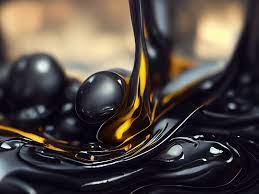
11. Application in other aspects
Suppose AES is used as a solvent with compounds such as butyl glycol or butyl diethylene glycol. In that case, it can be made into a high-expansion fire-extinguishing concentrate, improving foam stability and reducing the drainage rate. It is a good fire-fighting material. AES can also be used as a foaming agent in a variety of foaming products, such as toothpaste foaming agents, latex foaming agents, resin foaming agents, etc.
Supplier
TRUNNANO is a supplier of AES with over 12 years experience in nano-building energy conservation and nanotechnology development. It accepts payment via Credit Card, T/T, West Union and Paypal. Trunnano will ship the goods to customers overseas through FedEx, DHL, by air, or by sea. If you are looking for high-quality AES please feel free to contact us and send an inquiry.
Inquiry us
PREVIOUS NEWS
building materials industry indispensable good material
NEXT NEWS
